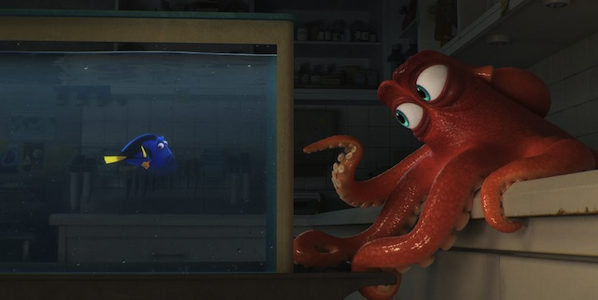
ReelBob: ‘Finding Dory’
By Bob Bloom
“Finding Dory” wraps its arms around you as it unspools its story of love, loss, friendship and, most importantly, family.
This sequel, which comes 13 years after “Finding Nemo,” follows the short-termed memory Dory as she begins remembering how she became separated from her mother and father and undertakes her journey to find them.
“Dory” is a movie that works on multiple levels: It’s a fun-filled animated feature that will please and entertain children and their parents, while it also examines how parents protect, encourage and love offspring with special needs, who are different from the norm.
In Dory’s case, it is her short-term memory loss that is the cause of her separation from her parents.
After a quick recap of how Dory meets clownfish Marlin and helps him rescue his son, Nemo, we move on to Dory’s story.
It seems that certain sights or objects begin rekindling flashbacks for the blue-tang Dory, sparking her transoceanic voyage — and that of Marlin and Nemo — from the coral reef waters of Australia to California to find Dory’s folks.
It is here when “Dory” stumbles a bit. With the entire ocean to play with, the Pixar team, headed by director Andrew Stanton, decides to set the bulk of the story in the close quarters of a landlocked Marine Life Institute, where various fish are confined to mostly small enclosures.
This seems to constrict the action and the story, smothering them in tight places and not letting them spread their fins — or gills.
The real-world institute setting, unfortunately, diminishes the magic and limits the imaginative options afforded by the open sea.
However, those quibbles are trumped by the vocal talents of Ellen DeGeneres, reprising her role as the voice of Dory.
Her character’s riffs, observations and comments are endearing, and make you root more for Dory to succeed in her quest.
In the institute, Dory finds a new friend and ally in Hank, a chameleonic octopus, voiced by Ed O’Neill, who, because he is afraid of the other fish in the ocean, prefers living safely in an enclosure than being free at sea.
Unfortunately, the film’s emotional highlight and climax occur a good 10 to 15 minutes before the finale, forcing the filmmakers to use a slapstick-style ending that is remarkably out of tone with the rest of the movie.
“Finding Dory,” like its predecessor, is a tale of wandering from overprotective, anxious parents. In both, though, the characters with so-called genetic flaws are triumphant.
The film’s vocal cast includes a returning Albert Brooks as Marlin, as well as Diane Keaton, Eugene Levy, Idris Elba and Dominic West.
“Piper,” a short about a baby sandpiper learning to feed and walk, precedes “Dory.” It is one of the best Pixar shorts in years.
Both the short and the feature will draw moms and dads closer to their kids, while they bond over these delightful offerings.
Bloom is a member of the Indiana Film Journalists Association. His reviews appear at ReelBob (reelbob.com) and Rottentomatoes (www.rottentomatoes.com). He also reviews Blu-rays and DVDs. He can be reached by email at bobbloomjc@gmail.com or on Twitter @ReelBobBloom.
FINDING DORY
3 stars out of 4
(PG), some scary themes and action